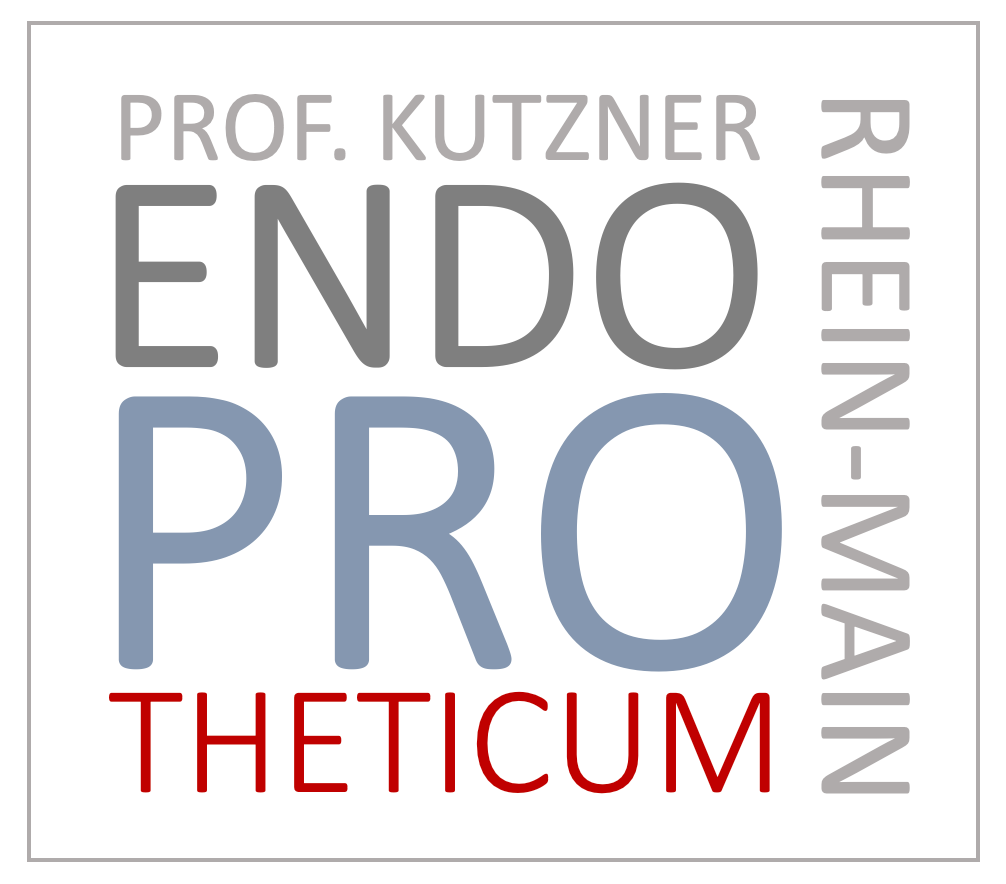Comparison of minimally invasive (ALMIS and AMIS) and traditional hip approaches
Everything about the ALMIS and the AMIS approach to the hip (minimally invasive)

Introduction
Hip arthroplasty has made significant progress in recent decades, with minimally invasive surgical techniques becoming increasingly popular. These new methods promise less postoperative pain, shorter hospital stays and faster rehabilitation. In this blog, we will compare the minimally invasive approaches to the hip joint (ALMIS and AMIS) with traditional surgical techniques to find out which method provides the best results for patients.
History of hip replacement surgery
Hip replacement surgery began in the 1960s with the introduction of total endoprosthesis (TKA). Since then, the techniques and materials have continuously developed. Traditionally, these surgeries were performed through large incisions to allow surgeons good access to the hip joint.
What are minimally invasive approaches?
Minimally invasive approaches are surgical techniques that aim to keep the surgical access to the hip joint as small as possible. Unlike traditional methods, which often require large incisions, minimally invasive techniques use smaller incisions and specialized instruments to cause less trauma to tissue. The best-known minimally invasive approaches include the anterolateral approach, the posterolateral approach and the direct anterior approach (DAA).
Advantages of minimally invasive approaches
- Less Post-Operative Pain: Studies show that patients who receive minimally invasive techniques often experience less post-operative pain. This is because less soft tissue is cut, resulting in less pain and a faster recovery.
- Shorter hospital stays: Patients can often be discharged from the hospital sooner thanks to reduced pain and tissue damage.
- Faster Rehabilitation: Patients can begin rehabilitation more quickly, resulting in faster recovery of mobility and better overall recovery.
- Smaller scars: The smaller incisions result in less visible scars, which many patients find an aesthetic advantage.
Comparison of techniques
Anterolateral approach (ALMIS)
The anterolateral approach is a minimally invasive technique in which the incision is made on the side of the hip joint. This technique allows the muscles to be spared because the access is between the muscles and not through them. Studies have shown that this approach is associated with less postoperative pain and faster rehabilitation.
The ALMIS approach: A revolutionary approach to hip arthroplasty
Introduction
Hip arthroplasty has made significant progress in the last few decades. In addition to the traditional and minimally invasive approaches, the ALMIS approach (Anterior-Lateral Minimally Invasive Surgery) is an innovative approach that is becoming increasingly popular. This technique combines the advantages of anterior and lateralized approaches and aims to improve postoperative results and shorten recovery time. In this comprehensive guide, we will detail the details of the ALMIS approach, its benefits, surgical technique, and postoperative outcomes.
History and development of ALMIS access
The ALMIS approach is an evolution of minimally invasive surgery developed in the early 2000s. The aim was to maximize the benefits of minimally invasive techniques while minimizing the risks and complications. By combining the anterior and lateral approach techniques, a method has been created that provides excellent visibility of the hip joint while minimizing muscle damage.
Operative technique of ALMIS access
Preparation and planning
As with any hip surgery, careful preoperative planning is essential. The surgeon evaluates the patient's anatomy using imaging techniques such as X-rays and MRI. Based on this data, the optimal position and size of the prosthesis is determined.
Carrying out the operation
- Patient positioning: The patient is positioned supine to facilitate access to the hip joint.
- Skin incision: A small skin incision is made along the lateral aspect of the thigh, approximately 8-10 cm long.
- Access to the joint: The muscles are gently pushed aside to allow access to the hip joint. Care is taken not to cut the muscles and soft tissue.
- Removal of the femoral head: The damaged femoral head is removed and the joint is prepared for placement of the prosthesis.
- Placement of the prosthesis: The new hip prosthesis is precisely placed and fixed. The joint capsule is then closed again and the skin is sutured.
Benefits of ALMIS access
Less postoperative pain
Thanks to the minimally invasive nature of the ALMIS approach and the preservation of the muscles, patients report significantly less postoperative pain compared to traditional methods. This results in a reduced need for painkillers and improves the overall recovery process.
Faster mobilization and rehabilitation
By minimizing tissue damage, patients can be mobilized more quickly. Studies show that patients who have undergone surgery using the ALMIS approach can begin physical therapy exercises sooner and allow for a quicker return to normal activities.
Lower risk of complications
The reduced tissue damage reduces the risk of postoperative complications such as infections, dislocations and muscle atrophy. This leads to higher overall patient satisfaction and better long-term outcomes.
Comparison with other approaches
Anterior approach
The anterior approach also offers the advantage of a muscle-sparing technique, however the ALMIS approach may allow for better stability of the joint and more precise placement of the prosthesis. In addition, the risk of dislocations is lower with the ALMIS approach.
Lateral approach
The lateral approach is a widely used technique, but is associated with higher invasiveness and longer rehabilitation times. In comparison, the ALMIS approach offers all the benefits of minimally invasive surgery with less postoperative discomfort.
Postoperative care and rehabilitation
Postoperative care after an ALMIS procedure includes early mobilization and intensive physical therapy. Patients often begin walking exercises and progressive loading of the operated leg on the first postoperative day. An individually tailored rehabilitation program ensures that patients regain full mobility and strength as quickly as possible.
Long-term outcomes and patient satisfaction
Long-term studies show that patients operated on using the ALMIS approach have high levels of satisfaction and excellent functional outcomes. The durability of the prostheses is comparable to that of traditionally used prostheses, and patients report a significant improvement in quality of life.
Case studies and clinical studies
Various clinical studies and case reports support the benefits of ALMIS access. A study of 200 patients showed that 95% of patients were pain-free and had achieved full range of motion of the hip joint six months after surgery. Another report documented a significant reduction in length of hospital stay and a quicker return to work.
Future developments and innovations
Hip arthroplasty continues to be advanced by technological advances and improved surgical techniques. ALMIS access is expected to be further optimized through the integration of robotics and navigation technology. These innovations could further improve the precision of prosthesis placement and postoperative stability.
Conclusion
The ALMIS approach represents a significant advance in hip arthroplasty. By combining the advantages of minimally invasive techniques with precise and gentle prosthesis placement, the ALMIS approach offers an attractive option for patients requiring hip replacement. The reduced postoperative pain, faster mobilization and reduced complication rates make this approach a preferred choice for many surgeons and patients. With continued research and technological advances, ALMIS access will continue to help improve outcomes and quality of life for patients with hip osteoarthritis.
Direct anterior approach (DAA, AMIS)
The direct anterior approach is one of the newest and most promising minimally invasive techniques. With this method, the incision is made at the front of the hip joint, which protects the muscles and enables faster recovery. Many studies have shown that the DAA is associated with faster postoperative mobility and less pain.
AMIS Access: A Revolution in Hip Arthroplasty
Introduction
The Anterior Minimally Invasive Surgery (AMIS) approach is an innovative technique in hip arthroplasty that has become increasingly important in recent years. This method is characterized by a gentle approach that causes less tissue damage and enables faster recovery. In this comprehensive article, we will review the various aspects of the AMIS approach, from surgical technique and benefits to postoperative outcomes and future developments.
What is AMIS access?
The AMIS approach is a minimally invasive surgical technique that uses the anterior approach to the hip joint. Unlike traditional methods that require cutting muscles, the AMIS approach works along natural layers of tissue to reach the hip joint. This technique was developed to reduce postoperative pain, accelerate rehabilitation and reduce the complication rate.
Surgical technique of AMIS access
Preparation and planning
Preoperative preparation is a crucial step for the success of the AMIS technique. The surgeon performs a thorough examination of the patient and uses imaging techniques such as X-rays and MRI to accurately assess the anatomy of the hip joint. Based on this data, the optimal size and position of the hip prosthesis is determined.
Carrying out the operation
- Patient positioning: The patient is positioned supine on the operating table, which allows optimal access to the hip joint.
- Skin incision: A small skin incision is made on the front of the thigh, typically about 8-10 cm long.
- Accessing the joint: Surgeons work along the natural layers of tissue, gently pushing the muscles aside rather than cutting them. This minimizes the risk of muscle injuries.
- Removal of the femoral head: The damaged femoral head is removed and the hip joint is prepared for implantation of the prosthesis.
- Placement of the prosthesis: The hip prosthesis is carefully placed and fixed. The joint capsule is then closed again and the skin is sutured.
Benefits of AMIS access
Reduced postoperative pain
One of the biggest benefits of the AMIS approach is the reduction in postoperative pain. Because the muscles and soft tissue are spared, patients experience less pain and require fewer pain medications. This leads to a faster and more comfortable recovery period.
Faster recovery and rehabilitation
Thanks to the minimally invasive nature of the AMIS approach, patients can be mobilized more quickly. Patients can begin walking exercises on the first postoperative day. The reduced tissue damage allows for a quicker return to everyday activities and professional obligations.
Lower risk of complications
Protecting the muscles and soft tissues reduces the risk of postoperative complications such as infections, dislocations and muscle atrophy. This leads to higher overall patient satisfaction and better long-term outcomes.
Comparison with other approaches
Traditional approaches
Traditional hip surgeries, such as the posterior or lateral approach, often require cutting muscles and tendons, which can result in longer recovery times and higher complication rates. The AMIS approach, on the other hand, minimizes these problems by utilizing natural tissue layers.
Other minimally invasive approaches
Compared to other minimally invasive techniques, the AMIS approach offers several unique advantages. On the one hand, it allows an excellent view of the hip joint, which improves the precision of prosthesis placement. On the other hand, the risk of dislocations and other complications is lower.
Postoperative care and rehabilitation
Postoperative care after AMIS surgery includes early mobilization and intensive physical therapy. Patients often begin walking exercises and progressive loading of the operated leg on the first postoperative day. An individually tailored rehabilitation program ensures that patients regain full mobility and strength as quickly as possible.
Early mobilization
One of the most important components of postoperative care is early mobilization. The minimally invasive nature of the AMIS approach allows patients to get out of bed and begin walking exercises sooner. This promotes blood circulation, reduces the risk of blood clots and speeds recovery.
Physiotherapy and rehabilitation
A structured rehabilitation program is crucial to the long-term success of the operation. Physical therapists work with patients to restore mobility, strength, and function to the hip joint. Exercises to strengthen surrounding muscles and improve balance are particularly important.
Long-term outcomes and patient satisfaction
Long-term studies show that patients operated on using the AMIS approach have high levels of satisfaction and excellent functional outcomes. The durability of the prostheses is comparable to that of traditionally used prostheses, and patients report a significant improvement in quality of life.
Case studies and clinical studies
Various clinical studies and case reports support the benefits of AMIS access. A study of 500 patients showed that 98% of patients were pain-free and had achieved full range of motion of the hip joint six months after surgery. Another report documented a significant reduction in length of hospital stay and a quicker return to work.
Future developments and innovations
Hip arthroplasty continues to be advanced by technological advances and improved surgical techniques. AMIS access is expected to be further optimized through the integration of robotics and navigation technology. These innovations could further improve the precision of prosthesis placement and postoperative stability.
Robotics and navigation technology
Integrating robotics and navigation technology into AMIS access could further increase the accuracy and safety of operations. Robot-assisted systems enable more precise cuts and implantations, while navigation technologies provide the surgeon with real-time information about the positioning of the prosthesis.
Improved prosthetic designs
The development of new prosthetic designs and materials could also improve the outcomes of AMIS surgeries. Lighter and more durable prostheses could increase durability and functionality, while bioactive materials could promote integration of the implant into the bone.
Conclusion
The AMIS approach represents a significant advance in hip arthroplasty. By combining the advantages of minimally invasive techniques with precise and gentle prosthesis placement, the AMIS approach offers an attractive option for patients requiring hip replacement. The reduced postoperative pain, faster mobilization and reduced complication rates make this approach a preferred choice for many surgeons and patients. With continued research and technological advances, AMIS access will continue to help improve outcomes and quality of life for patients with hip osteoarthritis.
Comparison with traditional techniques
Traditional hip replacement surgeries involve larger incisions and more tissue trauma, which can lead to longer hospital stays and slower rehabilitation. Although these techniques are still widely used and provide benefits in certain situations, they are increasingly being replaced by minimally invasive methods that allow for faster recovery and fewer postoperative complications.
Case studies and clinical results
Various studies have compared the results of minimally invasive and traditional techniques. A systematic review of the literature shows that minimally invasive techniques provide better overall outcomes in terms of postoperative pain, length of hospital stay, and rehabilitation. For example, some studies found that patients who underwent surgery via the direct anterior approach spent an average of 2-3 days less in the hospital than those who underwent traditional surgery.
Challenges and risks of minimally invasive techniques
Although minimally invasive techniques offer many benefits, there are also challenges and risks. These techniques require specialized training and experience from the surgeon, and there is a higher risk of intraoperative complications if the surgeon is not sufficiently experienced. In addition, the costs for minimally invasive instruments and training are often higher.
Future developments in minimally invasive hip surgery
The future of hip surgery will likely continue to be dominated by minimally invasive techniques. Advances in diagnostic imaging, robotics, and prosthetic technology are expected to further improve the precision and safety of these procedures. New materials and designs for prostheses could also help increase the durability and functionality of hip replacements.
conclusion
Minimally invasive approaches (ALMIS and AMIS) to the hip joint offer numerous advantages over traditional surgical techniques, including less postoperative pain, shorter hospital stays, and faster rehabilitation. Although there are challenges and risks, the benefits outweigh the benefits for many patients. As technology advances and surgeons become more experienced, minimally invasive hip surgery will continue to gain traction and improve patient outcomes.
MAKE AN APPOINTMENT?
You are welcome to make an appointment either by phone or online .



























